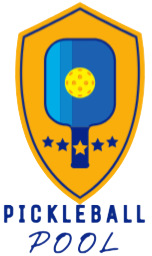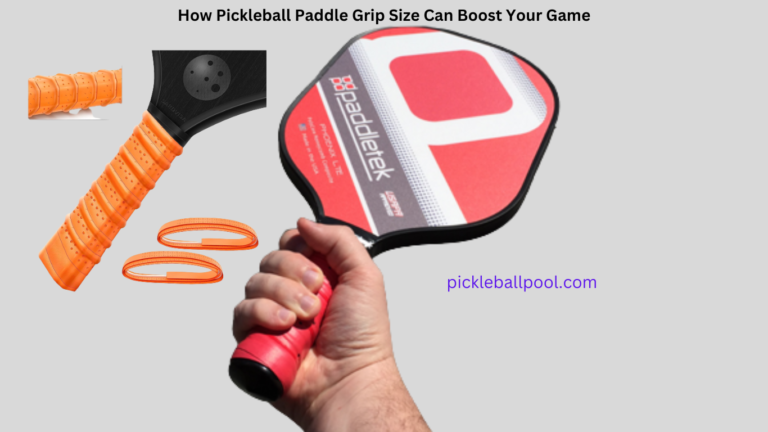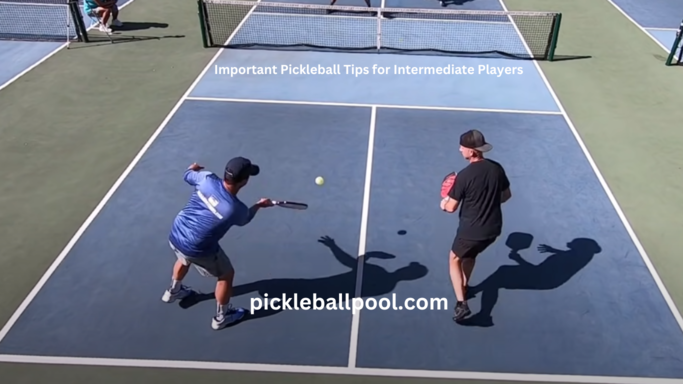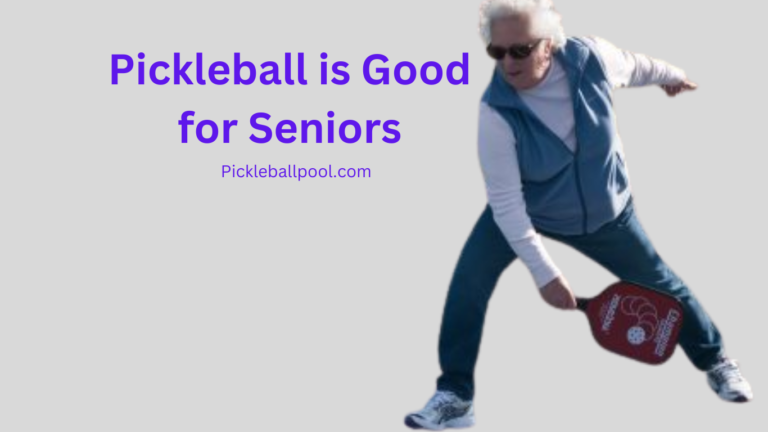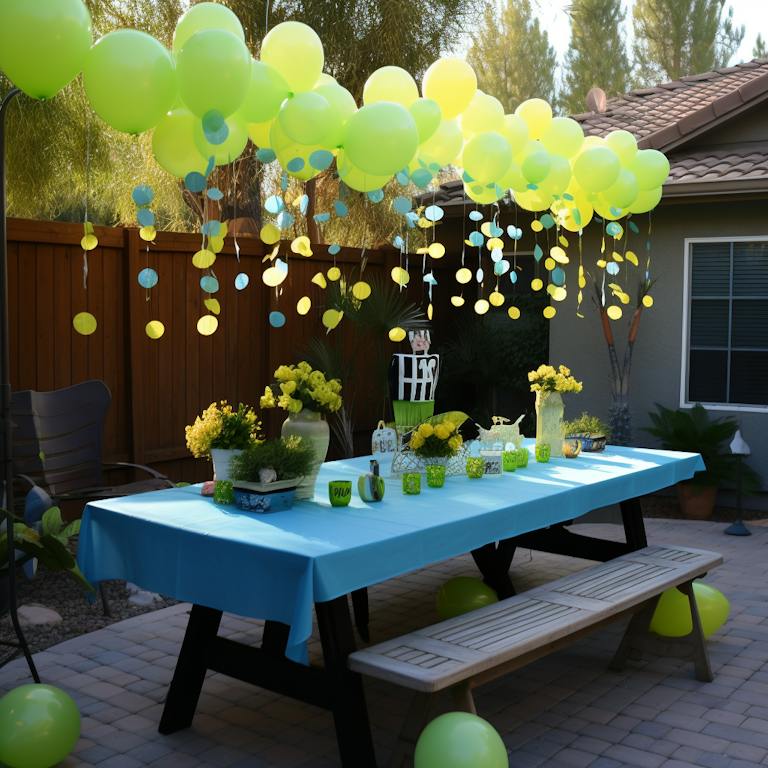Some Common Pickleball Terms and Their Meanings
Pickleball has its own unique vocabulary full of key terms to know. Some common pickleball terms include’ serve’ (an underhand hit starting play), ‘volley’ (hitting the ball before it bounces), ‘dink’ (a soft shot over the net), ‘fault’ (an illegal serve), ‘kitchen’ (the no-volley zone by the net), ‘paddle’ (racquet used to hit the ball), and ‘pickleball’ (the perforated plastic ball). Mastering the lingo is part of learning the sport!
Pickleball is a fun mix between tennis, badminton, and ping pong. People of all ages can play it. Since pickleball uses some unique words, I’m going to break down some of the common pickleball terms and what they mean. Read on to learn the lingo so you can talk like a pro!
What is Pickleball All About?
Pickleball is a game that was created in 1965 by Joel Pritchard, Bill Bell, and Barney McCallum. It started as a backyard game but quickly became popular and is now played all over the world in places like leisure facilities, schools, and competitions.
The rules are simple and the game is fast paced. Pickleball can be played in singles or doubles formation. Due to its ease of play, pickleball popularity has been exploding lately, especially among adults and active seniors.
But like every sport, pickleball has its own unique vocabulary. So grab your paddle as we dive into all the lingo!
Common Pickleball Terms and Meanings
Here are some common pickleball terms and their meanings:
Gearing Up with Pickleball Equipment
You can’t play any sport without the proper gear. Here’s a primer on key pickleball equipment and terms:
Essential Pickleball Gear
- Paddle: The lightweight, large paddle used to hit the ball Often made of graphite, composites, aluminum, or fibreglass.
- Ball: the whiffle-style, plastic pickleball with holes It weighs 0.8–0.9 oz. and is 2.87–2.97 inches wide.
- Court Shoes: athletic shoes with good lateral support and traction for quick starts and stops.
- Gloves (optional): lightweight gloves to absorb sweat and improve grip.
- Wristbands (optional): absorb sweat and keep paddles from slipping.
Pickleball Paddle Anatomy
Let’s break down the different parts of a pickleball paddle:
- Face: The hitting surface has a textured paddle surface. Creates ball spin.
- Core: The internal layer provides power by adding stiffness. Often composite or polymer.
- Edge Guard: protective trim around the paddle edge to prevent chipping. Usually vinyl or TPE.
- Handle: A longer grip area allows two-handed shots. Wrapped in grip tape.
- Grip: The cushioned cover improves comfort and absorption. Replaced periodically.
- Butt Cap: The end cap provides balance and protects the handle. Weighted caps add power.
Pickleball Bags and Accessories
Don’t forget these handy pickleball gear bags and accessories:
- Carry Bag: For transporting paddles, balls, gear, water, towels, etc. Multiple pockets.
- Ball Tube: Holds multiple balls when playing. Attaches to a net or fence.
- Paddle Holder: Clips onto a net to store the paddle without bending it.
- Gear Backpack: For hands-free carrying of all your pickleball equipment.
Rules of the Pickleball Court
Now let’s go over some key terminology related to the pickleball court itself:
- Baseline: The back line on each side of the court, from which serves must be hit.
- Non-Volley Zone: the 7-foot no-volley area on each side of the net near the middle. Also called the…
- Kitchen is a slang term for the non-volley zone, referring to the old saying, “if you can’t stand the heat, get out of the kitchen!”
- Sidelines: The outer lines mark the width boundaries on each side.
- Centerline: The line dividing the two service courts down the middle.
- Alleys: The service court areas outside the sidelines when playing doubles.
- Right/Even Service Courts: The two service courts are on each side of the center line.
Pickleball Terms[Serving]
Mastering the serve is key, so here are some essential pickleball serving terms and rules:
- Serve: Hitting the ball into play from the baseline Must be an underhand serve below waist level.
- Service Motion: The paddle must be moving upwards during serve. No pausing or downward motions.
- Fault: an illegal serve that lands outside the service court. Two faults equal a double fault, which loses the point.
- Foot Fault: When the server steps over the baseline before contact. Also results in a fault.
- Let’s call it a serve that hits the net but still lands in the service court. Let serves can be replayed.
- Service Court: The diagonal court area the serve must land in to be considered good
- Double Bounce Rule: The ball can bounce once in a non-volley zone on the serve only.
Return of Serve and Volleys
Once the ball is in play, here are some terms you’ll hear related to volleys and returns:
- Return of Serve: The receiver’s first hit returns the serve back diagonally.
- Volley: Hitting the ball out of midair before it bounces Usually done close to the net.
- Overhead Volley: When the ball is hit in the air above the head. This dramatic shot adds power.
- Half-volley: hitting a low volley close to the ground right after the ball bounces.
- Swinging Volley: Hitting a groundstroke with a volleying motion while the ball is still ascending.
- Poach: In doubles, cross over to volley a ball normally meant for your partner.
Groundstroke Terms
When the ball bounces, you’ll want to know these common pickleball groundstroke terms:
- Groundstroke: hitting the ball after it bounces once on your side of the court. Can be forehand or backhand.
- Crosscourt shot: hitting the ball diagonally into the opponent’s court.
- Down the Line Shot: Hitting down the sideline to the opponent’s backhand
- Passing Shot: Hitting the ball past a player at the net to the open court behind them.
- Lob: Hitting the ball high with topspin in an arc over the opponent’s head. Defensive manoeuvre.
- Overhead Smash: aggressively slamming the ball over your head straight down into the opponent’s court. High risk, high reward!
Pickleball Terms (Strategy)
Let’s get into key pickleball gameplay strategy terms every beginner should know:
- Dink: A light shot that just clears the net, forcing the opponent up close to the non-volley zone. Great for setting up a slam!
- Drop Shot: A delicate groundstroke that just makes it over the net, dropping into the non-volley zone. Drives opponents nuts!
- Third Shot Drop: Executing a drop after the serve and return to gain control of the point
- Approach Shot: Hitting a groundstroke that allows you to move closer to the non-volley zone for a volley
- Put Away: A winning shot that slams or volleys the ball to a spot the opponent can’t reach. Game, set, match!
- Rally: exchanging multiple shots back and forth during a volley as you try to outmanoeuvre your opponent.
- Lateral Movement: shuffling left and right to get in position for shots. Don’t forget to bend those knees!
- Shot Selection: choosing strategic strokes based on positioning and conditions to gain an advantage.
Pickleball Scoring Rules
You can’t win if you don’t understand pickleball scoring.
- Points: Games are played to 11 points; win by 2. Points are numbered 1, 2, 3 rather than 15, 30, or 40, like in tennis.
- Server: Only one side serves the entire game. The serve switches sides for the next game.
- Double Bounce Rule: The ball can bounce twice on the serve received, but just once after that.
- Faults: Points are lost by hitting out of bounds, into the net, or other faults like foot faults.
- Match: Played best 2 out of 3 games to 11 points, win by 2.
- Tournament Format: It can be single elimination, round robin, or pool play leading to elimination bracket.
- Reffing: self- to the honour system. Referees are used for tournaments. Line judges make in/out calls.
Helpful Pickleball Jargon
We’ve covered a ton so far. Here are a few more miscellaneous pickleball terms that may come in handy:
- Dinks Giving: long rallies with continuous dinking back and forth Also called Dinkamania!
- Cooking: letting the ball bounce more than once before returning, usually accidentally!
- Shank: completely mishitting the ball, often off the paddle rim. We’ve all done it!
- Punch Volley: A firm volley with a quick punching motion, popping the ball over the net.
- Pickleballer: A player and fan of the sport of pickleball. That’s you!
- Erne – A weird pickleball bounce that’s nearly impossible to return. Blame it on the funky ball!
- Stacking the Courts: organizing play when people are waiting to get on the court.
- Hinder: Any distraction impacting play, like a stray ball on the court. Point is replayed.
- On theRun:Chasing down a ball way out of position by sprinting across the court. Get those legs moving!
- Referee : The official who resolves disputes and makes calls in tournament play when line judges are not used. They keep the peace!
Conclusion: Pickleball Terms
In conclusion, understanding common pickleball terms is essential for players to communicate effectively on the court and enhance their gameplay. Whether it’s knowing when to execute a dink or a slam, or understanding the importance of a well-placed third shot drop, these terms allow players to strategize and collaborate with their partners.
There you have it – a beginner’s guide to all the essential pickleball lingo! We’ve covered paddles, courts, serves, volleys, groundstrokes, strategy terms, scoring, and plenty of extra vocabulary too. Now you’re ready to step onto the court and start talking the talk.
Remember, don’t just stand there – follow proper court positioning, keep those feet moving, bend your knees, and try not to get cooked in the kitchen! Master the basics, practice all the shots, and you’ll be on your way to pickleball greatness in no time. Now go grab a buddy and start rallying!
FAQs
Can you play pickleball both inside and outside?
Yes, you may play pickleball both inside and outside. People can build outdoor courts in parks, tennis courts, or any other suitable flat area, while recreation centers or sports complexes often house indoor courts.
Is pickleball appropriate for players of all ages?
Absolutely! People of all ages and ability levels can enjoy the adaptable sport of pickleball. It is a fantastic opportunity to stay active, interact with others, and have fun.
How can I develop my pickleball abilities?
Consider taking lessons from seasoned players or instructors, practicing frequently, and competing in tournaments or friendly matches to advance your pickleball abilities. Reading pickleball strategy books and watching instructional videos can both be helpful.
Do pickleball paddles come in different varieties?
Yes, there are many different kinds of pickleball paddles on the market. Their compositions, weights, grip sizes, and surface textures vary. It’s crucial to select a paddle that matches your tastes and playing style.
Can someone who has never played another racquet sport play pickleball?
Absolutely! Pickleball’s simplicity of learning earns it high regard, enabling even novices without prior racquet sport expertise to access it easily.. You’ll pick up the game quickly with some practice and direction and begin to like it.
